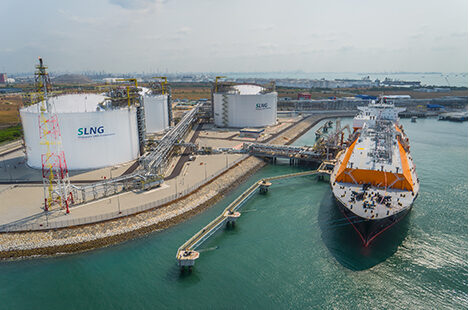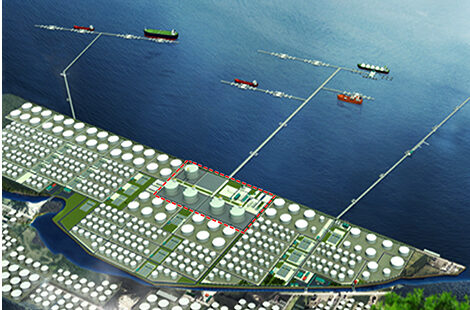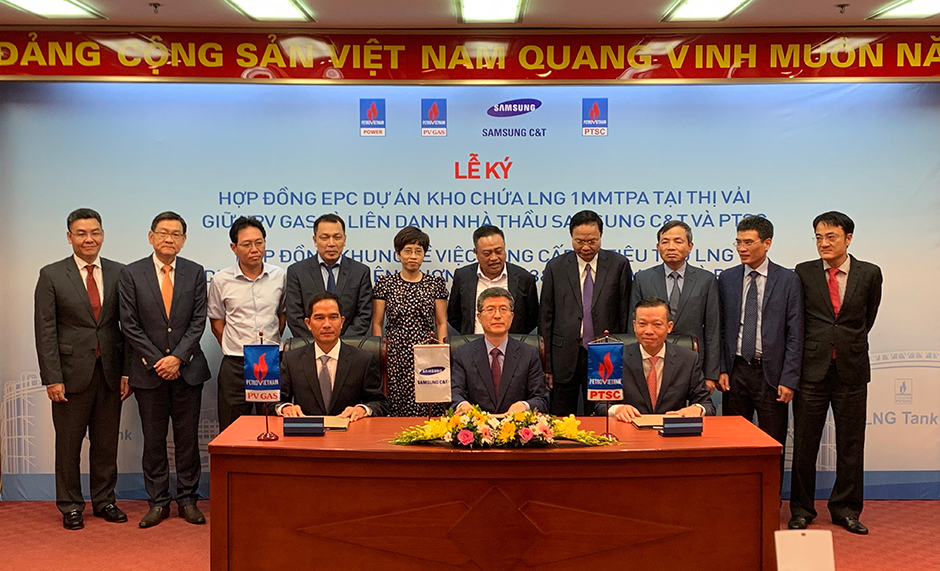In today’s energy industry, power comes from many sources. One major source is natural gas, making up almost a quarter – 23 percent, to be exact – of global energy demand. It’s widely used for electricity generation as well as in domestic cooking and heating.
Natural gas is buried deep beneath the soil in a gaseous state and must be extracted first before storage and transportation. One efficient and safe way for storage is to turn it into a liquid, or liquefaction. The U.S. Energy Information Administration defines liquefied natural gas (LNG) as “Natural gas that has been cooled to a liquid state (liquefied), at about -162 Celsius, for shipping and storage. The volume is about 600 times smaller than its volume in its gaseous state.”
Let’s take a look at how LNG has become a major global energy source and what role Samsung C&T Engineering & Construction (E&C) Group is playing in this process.
Reasons for LNG’s increased popularity
According to global management consulting firm McKinsey & Company, LNG has certain benefits that make it attractive. Firstly, it is 50 to 70 percent cheaper than oil, giving it an economic advantage. Supply of LNG is stable, which helps to compensate for the intermittent supply of renewable energy available in the mix. Also, LNG emits fewer air pollutants compared to coal and oil when it is consumed. The increased supply of LNG and the development of better storage and regasification technology – in other words, its accessibility – is yet another advantage.
Taking all these benefits into consideration, it is hardly surprising that the International Energy Agency predicts that global LNG trade will increase 21 percent by 2025 compared to 2019 statistics. The Asia-Pacific region, led by China and India in particular, is set to increase its total share of world LNG imports from 69 percent in 2019 to 77 percent in 2025. Thailand and Vietnam are also increasing LNG imports to meet their new energy demands.
Making LNG more accessible: Terminals by Samsung C&T
Samsung C&T E&C Group takes part in this process by constructing LNG terminals in multiple locations. An LNG terminal is a facility where imported LNG first arrives and it is where LNG is received, stored, and converted back into a gaseous form. To keep gas in a liquid state, these maintain extremely cold temperatures, different from ordinary storage containers.
For starters, Samsung C&T E&C Group constructed a terminal equipped to handle 4.5 million tons of LNG per annum consisting of three 180,000 cubic-meter LNG tanks on Singapore’s Jurong island. This facility is the first LNG terminal in the city state. Having won the contract for Phase 1 and 2 in 2010, Samsung C&T successfully competed for a subsequent contract for Phase 3 in 2014 based on a high level of client satisfaction. Upon its completion, Singapore acquired the ability to receive, storage, regasify, and re-export LNG.
In Malaysia, between 2014 and 2018, Samsung C&T E&C Group built two larger LNG tanks, each with a volume of 200,000 cubic meters, and LNG regasification facilities to process 5 million tons of LNG per annum in Pengerang, Johor state. This terminal, known as RGT-2, supplies LNG to a nearby petrochemical complex and power plant. In 2013, Samsung C&T acquired Whessoe, a British engineering firm specialized in LNG storage tanks and regasification facilities. Whessoe was in charge of engineering the RGT-2’s LNG storage tanks and worked closely with Samsung C&T from the early stages of this project.
LNG comes to Vietnam: The Thi Vai Terminal
Based on the company’s combined experience completing both terminals in Singapore and Malaysia without any safety incidents, Samsung C&T E&C Group won the contract to construct the Thi Vai LNG Terminal in Vietnam in June 2019.
Slated to be Vietnam’s first such facility, it is scheduled to be completed in October 2022. This project, currently underway, involves a 180,000 cubic-meter LNG tank, a regasification facility, and a berth facility in the coastal area about 70 kilometers southeast of Ho Chi Minh City.
On December 12 2020, Samsung C&T E&C Group successfully installed the roof on the storage tank at Thi Vai. To achieve this feat of raising the 896-ton roof from the floor of the storage tank, compressed air was used to float it upwards in a technique called “Air Raising.” With the raising and fitting of the roof, the Thi Vai Terminal project has passed the halfway point. You can watch the moment in the video below.
Demand for LNG is increasing, requiring the construction of more of these LNG terminals around the world to receive, store, regasify and send out natural gas to the places where it is to be consumed. Samsung C&T E&C Group is ready to meet that challenge with its outstanding expertise and safe construction techniques.











